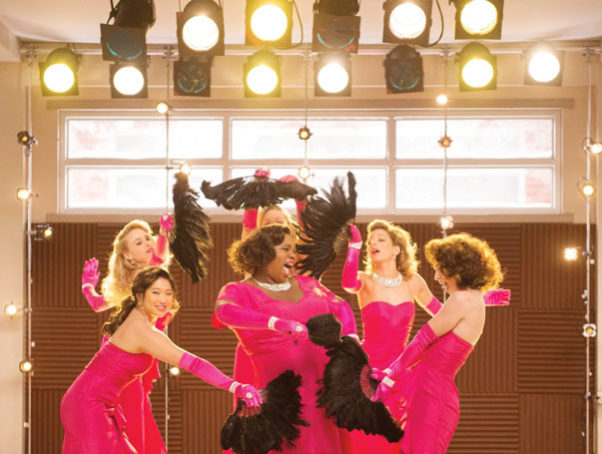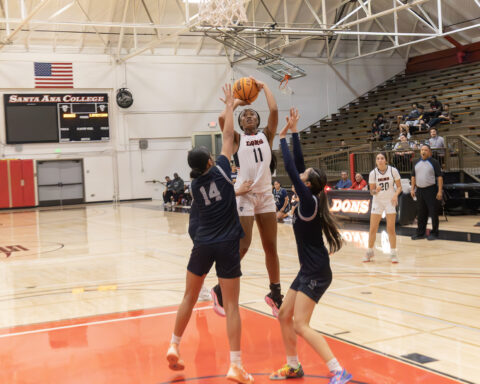
Media gives viewers a negative impression of transgender people by not accurately portraying them.
By Izabella Santana
An actors’ sex is assumed to align with the gender they are playing on television. In most shows, women play females and men play males — no deciphering necessary.
But when a transgender person steps into the limelight, the media and its ignorance shoves them into (often negative) stereotypes.
Media gives viewers a negative impression of transgender people by not accurately portraying what it really means to be trans. TV shows have a very powerful pull on opinions in today’s society, according to the Gay and Lesbian Alliance Against Defamation (GLAAD), a media-monitoring organization that advocates for the LGBT community. TV show writers decide whether transgender persons are shown in a positive or negative light, and GLAAD says more than half are choosing the latter.
Television shows such as CSI and The Cleveland Show present transgender people as deviating from today’s social norms.
Out of 102 episodes studied that have aired since 2002, 40 percent of transgender roles were viewed as the “victim,” 21 percent were characterized as the “villain” in the storyline, and another 20 percent played roles as sex workers, wrote Dana Schnittman, a volunteer writer for Pacific Center for Human Growth, a community center that focuses on the LGBT community. TV shows like Nip/Tuck continue to contain defamatory characterizations, including plots that show a trans woman regretting her transition and portrayals of trans characters as sex workers.
Charles Little, chair of the communications and media studies department at Santa Ana College agrees that transgender people are coming face to face with the battles of stereotyping in today’s society.
They are being unfairly portrayed in the media, professor Little says.
“In general, media has either portrayed transgendered people as the punch line to a sitcom joke or broadly painted them with derogatory stereotypes,” says Little. “However, the media is slowly beginning to accept and is attempting to understand trans people.”
Starting around eight years ago, prime time shows began diverting from portraying transgender people exclusively in a negative light. Titles like Glee and Ugly Betty give their viewers a better understanding of what trans people are really like. Actors like Glee’s Unique Adams and Ugly Betty’s Alexis Meade are positive role models with relatable quirks. Even newer shows, like Orange is the New Black and Hit & Miss, have made even more progress in this area — their trans characters are humanized.

Laverne Cox is one of the most recognizable new stars rising in the transgender-actor community, playing the role of Sophia Burset, a transgender hairdresser in Orange is the New Black. Though she started her career-playing prostitutes in TV shows she has found a new niche in her role as Sophia. As an actress, Cox has boosted the profile of the LGBT community by having a successful career as a trans woman in the notoriously harsh entertainment industry.
In a review, The Daily Dot said Cox is a breathtaking actress who is breaking down barriers as a transgender woman of color. While she once succumbed to the stereotypes put upon trans actors, she still fights a similar battle with her race. She represents both communities.
Thanks to actresses like Cox and characters like Sophia, the media is beginning to morph its portrayals of transgender people to tell a true story and give them the respect they deserve. Once more media begins to properly represent transgender people — instead of merely stereotyping them — people will also gain a better understanding of those around them.
“More media are now concerned with how to understand what story they are telling and care about telling it truthfully, as opposed to worrying about what not to say or how not to offend trans people,” Little says. “There is no doubt that as long as people are not informed or refuse to take time to understand the trans community, stereotypes will persist. However, it is incumbent on the media to move the understanding of trans people forward.”
Lance Lockwood, SAC communication studies professor and a member of the LGBT community, believes the trans community is moving forward in becoming properly acknowledged.
Like gay and lesbian actors before them, trans people are going through a commonly witnessed path to greater acceptance, Lockwood says.
Trans people are being introduced to the greater society through television just as gays and lesbians were before them: first as negative characters, then as comical ones and finally as humanized, real people. From CSI to Ugly Betty and now with Orange is The New Black, transgender people are slowly becoming more properly portrayed on TV.
“Once people understand that it isn’t all about comedy, there will be a shift in how people will portray transgender,” Lockwood says.
- In Photos: Fiestas Patrias 2025 - September 25, 2025
- The two-party system is failing us. - October 19, 2024
- Read our Fall 2023 Print: Vol. 100 No. 1 - October 23, 2023











